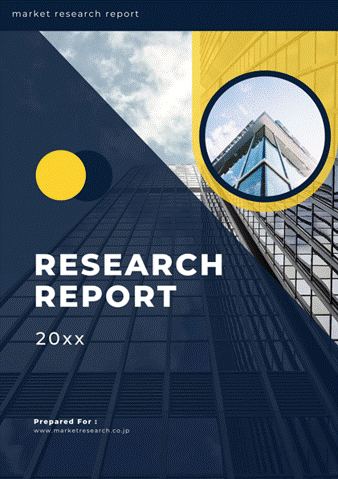 | • レポートコード:D0-MOR-AP1195 • 出版社/出版日:Mordor Intelligence / 2020年4月20日 • レポート形態:英文、PDF、90ページ • 納品方法:Eメール(受注後2-3営業日) • 産業分類:消費財及びサービス |
| Single User | ¥629,000 (USD4,250) | ▷ お問い合わせ |
| Team User | ¥703,000 (USD4,750) | ▷ お問い合わせ |
| Corporate License | ¥1,110,000 (USD7,500) | ▷ お問い合わせ |
• お支払方法:銀行振込(納品後、ご請求書送付)
レポート概要
| 本調査レポートは、ビーガン化粧品の世界市場について調査・分析した資料で、ビーガン化粧品の市場概要、動向、セグメント別市場規模、地域別分析、競争状況、企業情報、市場機会分析などで構成されています。 |
Vegan Cosmetics Market is anticipated to grow at a CAGR of 6.5% during the forecasted period (2020-2025).
– The market growth is driven by increasing consumer awareness of the usage of animal-derived ingredients as well as increasing demand from mainstream consumers across the globe for vegan-certified products is expected to push the revenue generation in the global market.
– Millenial customers are the major consumers of the market since they are more attracted towards innovative products.
– The demand for natural hair colors is growing in cosmetics market, hence the manufacturers put their emphasis on vegan, and toxin-free ingredients in the hair care products.
Key Market Trends
Growing Demand Of Halal Comstic Products Among Asian Consumers
Demand for halal cosmetic products among consumers across Malaysia, Indonesia, Jorden and UAE is increasing as more and more products in the halal cosmetic market space are produced and ingredients are increasingly halal certified. Indonesia has the largest Muslim population in the world, spending USD 218.8 billion across the Islamic economy sectors in 2017, with 215 million Muslims representing 13% of the global Muslim population in 2015. Also, more recently, countries like Malaysia and the UAE have undertaken important initiatives across regulation, trade and industry in order to position themselves in the growing halal cosmetics products market. For example, Malaysia established International halal Accreditation Board which aims to address short-term profit seeking among certifiers. Furthermore an increasing number of manufacturers are launching halal cosmetics products in the halal free zones of North America, Indonesia, Malaysia and south Korea.
Europe Holds A Major Share In The Market
The region has witnessed an increasing demand for natural and organic products , due to the rise in consumer awareness about the harmful effects of certain compounds such as paraben and aluminum compounds present in the skin care, hair care and deodorants. A high percentage of European consumers choose one brand over others, based on its natural formulation. This has enhanced an increase in the demand for safe, natural, and organic deodorant products in recent times. The purchases are made based on efficacy, with longer-lasting protection, and clinical properties. The demand for natural ingredients has been quite evident in the market, and this has led to a majority of companies launching products with nature-inspired ingredients, such as plant-inspired and premium botanical ingredients coupled with multi-functional properties.
Competitive Landscape
Global vegan cosmetics market is a fragmented market. Major players are focusing on introducing new products in the market to cater the interests of the players to enhance their spot in the market. New product development is the most preferred strategy in the market. Manufacturers of vegan cosmetics are more focused on developing innovative products to fulfil the changing needs and demands of consumers by using innovative ingredients.
Reasons to Purchase this report:
– The market estimate (ME) sheet in Excel format
– 3 months of analyst support
1 INTRODUCTION
1.1 Study Deliverables and Study Assumptions
1.2 Scope of the Study
2 RESEARCH METHODOLOGY
3 EXECUTIVE SUMMARY
3.1 Market Overview
4 MARKET DYNAMICS
4.1 Market Drivers
4.2 Market Restraints
4.3 Porter’s Five Forces Analysis
4.3.1 Threat of New Entrants
4.3.2 Bargaining Power of Buyers/Consumers
4.3.3 Bargaining Power of Suppliers
4.3.4 Threat of Substitute Products
4.3.5 Intensity of Competitive Rivalry
5 MARKET SEGMENTATION
5.1 By Product Type
5.1.1 Facial Cosmetics
5.1.2 Eye Cosmetic Products
5.1.3 Lip and Nail Make-up Products
5.1.4 Hairstyling and coloring products
5.1.5 Others
5.2 By Distribution Channel
5.2.1 Supermarkets/Hypermarkets
5.2.2 Convenience Stores
5.2.3 Specialty Stores
5.2.4 Online Retailers
5.2.5 Other Distribution Channels
5.3 Geography
5.3.1 North America
5.3.1.1 United States
5.3.1.2 Canada
5.3.1.3 Mexico
5.3.1.4 Rest of North America
5.3.2 Europe
5.3.2.1 Spain
5.3.2.2 United Kingdom
5.3.2.3 Germany
5.3.2.4 France
5.3.2.5 Italy
5.3.2.6 Russia
5.3.2.7 Rest of Europe
5.3.3 Asia Pacific
5.3.3.1 China
5.3.3.2 Japan
5.3.3.3 India
5.3.3.4 Australia
5.3.3.5 Rest of Asia-Pacific
5.3.4 South America
5.3.4.1 Brazil
5.3.4.2 Argentina
5.3.4.3 Rest of South America
5.3.5 Middle East and Africa
5.3.5.1 South Africa
5.3.5.2 Saudi Arabia
5.3.5.3 Rest of Middle East and Africa
6 COMPETITIVE LANDSCAPE
6.1 Most Active Companies
6.2 Most Adopted Strategies
6.3 Market Share Analysis
6.4 Company Profiles
6.4.1 MuLondon
6.4.2 Billy Jealousy
6.4.3 Beauty Without Cruelty
6.4.4 Nature’s Gat
6.4.5 MO MI BEAUTY
6.4.6 Emma Jean Cosmetics, INC
6.4.7 Inika
6.4.8 Gabriel Cosmetics Inc.
7 MARKET OPPORTUNITIES AND FUTURE TRENDS